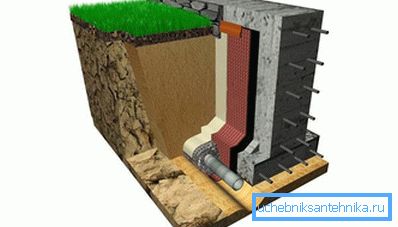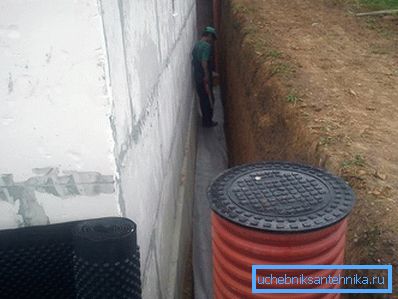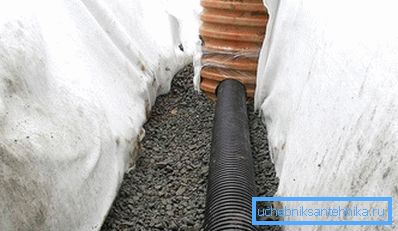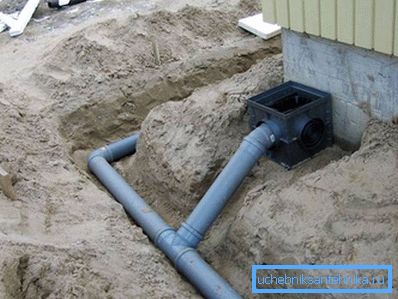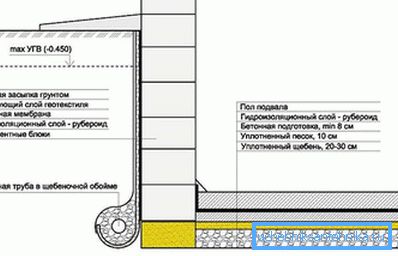Wall drainage of the basement: device, photo
Wall drainage of the basement is done in order to protect the base of the house from the excessive amount of moisture that has formed naturally. This includes excess moisture from rain, thawed and underground wastewater. Such a device is able to protect the base structure from significant changes associated with the appearance of dampness and mold.
Device purpose
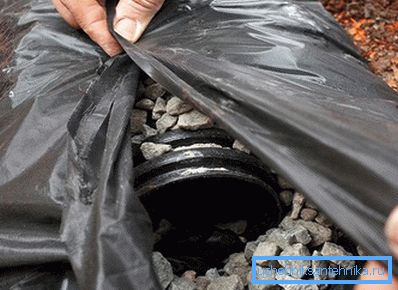
The drainage system, built near the building, is such a structure, which consists of pipes with a perforated base. They are installed with observance of a certain angle of inclination relative to the foundation in the gravel layer. All the accumulated liquid is concentrated at the bottom, and then flows along a branch pipe outside the territory.
Corner pipe connections provide special tanks - inspection wells, allowing you to do the cleaning at the time of occurrence of blockages.
There are 2 methods:
- Surface drainage.
- Deep drainage.

Most often in the suburban areas used drainage of the closed type. Drainage, arranged in a similar way, does not change the appearance of the site, and the soil in the places of pipe laying can be used for planting plants and lawn flowers.
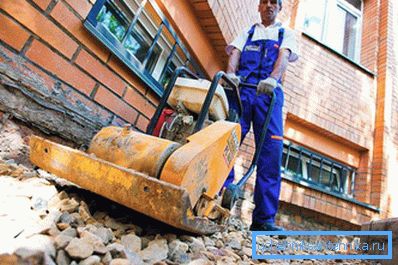
When laying pipes should be used in advance of the scheme for the foundation. Drainage pipes are filled with a mixture of sand and gravel. This layer performs the purpose of the filter. The pipes themselves are lightweight, while they have increased strength.
Construction of the drainage system
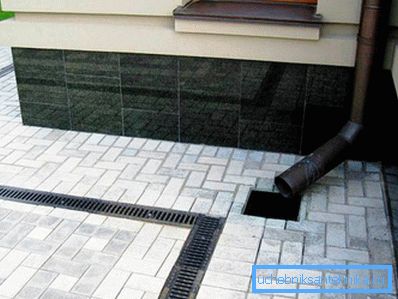
To implement the construction of the drainage system on a flat plane, it is necessary to equip the open drainage. The water accumulated in the trenches either dries out naturally or flows into a special tank for collecting water. Such structures are made both on flat ground and on a sloping surface.

Then the process of digging out two ditches is carried out. The first pit is located at the top, the second - a little lower. There is excess water flowing down. Ditches are combined through a pipe. Once in the lower trench, the liquid will later rush into a special well or reservoir.
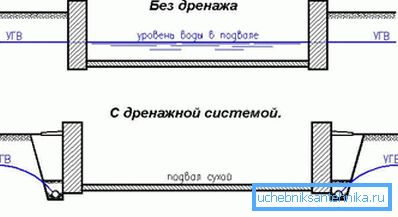
To avoid shedding the entire structure, it is important to make a small reinforcement. To do this, you must perform a slope of the surface within 20 degrees, and it is important to consider the quality of the soil. For example, clay soil indicates its greater strength, respectively, the slope can be made somewhat smaller. Occasionally, the ditch should be cleaned from litter. This will prevent stagnation of fluid in the pit.
It is necessary to take into account the quality indicators of the main support. It is customary to distinguish the types of the foundation:
- piling
- tape
- floating.
Tip! To ensure optimal protection of the foundation from excessive moisture, additional waterproofing of the base is made. It will protect the structure from the adverse effects of groundwater.
Surface drainage type is divided into linear and point type. The purpose of both options is the same: not to give moisture a chance to destroy the skeleton of a building. As a result, the fluid enters the reservoir, and then is discharged into the sewer.

Ring drainage contributes to the collection of water around the house. And you should keep a distance of half a meter from the base of the structure. The well must be placed slightly below the foundation.
First, the surface marking is done, then ditches are dug out, their size depends on the characteristics of the soil. Most often, their depth reaches 0.5 m, width - 40 cm. Do not forget about the slope.
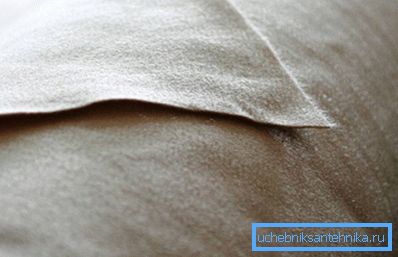
The bottom of the pit is laid out with a special material - geotextile, which prevents drainage from stagnation of silt. Then you can lay the pipes, which are then filled with rubble composite. To its base was strong and durable, should be made fixing rubble. The top layer should consist of soil that can be sown with lawn grass. Excess moisture most often flows into a well or sewer intended for mass use.
Video: construction of deep drainage
A photo
